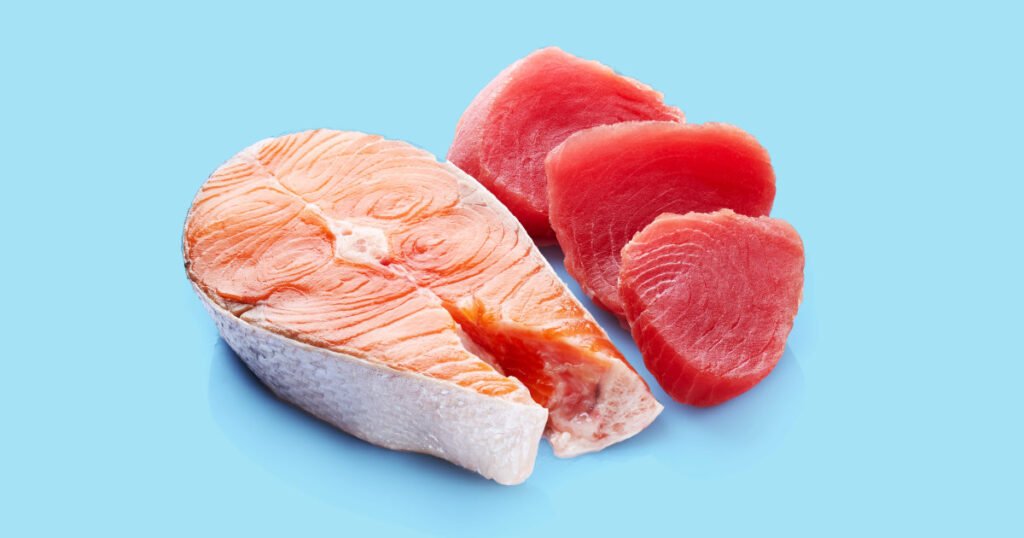Salmon and tuna are both popular seafood choices in the United States, offering numerous health benefits. They are recommended by the Dietary Guidelines for Americans as a good source of protein and nutrients. Both fish can be prepared in a variety of ways, such as grilling, roasting, or eating raw in sushi. But when it comes to comparing the health benefits of salmon and tuna, which is healthier? Dietitians take a closer look at the nutrition content of both fish to determine which one is the better option.
Salmon, both Pacific and Atlantic varieties, is a rich source of protein, omega-3 fatty acids, vitamins, and minerals. Wild-caught salmon tends to be higher in protein and omega-3 fatty acids, while Atlantic salmon is higher in fat and calories. A 3-ounce serving of fresh wild sockeye salmon provides 155 calories, 22 grams of protein, and significant amounts of vitamins B-12, D, and niacin. Salmon is known for its mild, buttery flavor and tender texture, making it a popular and nutritious choice for a healthy diet.
Tuna, including species like yellowfin, skipjack, and albacore, is another nutritious choice for protein, vitamins, and minerals. Tuna is leaner compared to salmon and is a good source of selenium, niacin, and vitamin B-6. A 3-ounce serving of fresh yellowfin tuna contains 110 calories, 25 grams of protein, and high levels of selenium. Tuna has a firmer texture and meatier taste, making it a versatile option for cooking or enjoying canned.
When comparing the nutrition content of salmon and tuna, there are key differences to consider. Salmon is higher in healthy fats, particularly omega-3 fatty acids, which are beneficial for heart and brain health. Tuna, on the other hand, is higher in protein and lower in calories and fat. Both fish provide essential nutrients like vitamins and minerals, but in varying amounts. Tuna has more selenium and niacin, while salmon is higher in vitamin B-12 and D.
Mercury content is an important consideration when choosing between salmon and tuna. Salmon is generally lower in mercury and considered a safe choice for regular consumption. Tuna, especially larger species, may contain higher levels of mercury. Pregnant women, breastfeeding mothers, and young children should be mindful of their mercury intake and opt for lower mercury fish options. Both salmon and tuna can be part of a healthy diet, but consumers should be aware of potential mercury exposure.
In conclusion, both salmon and tuna are healthy seafood choices with their own unique benefits. Salmon is ideal for individuals looking to increase their omega-3 intake, while tuna is a great source of protein with fewer calories and fat. Both fish can be enjoyed in various ways, whether fresh, grilled, or canned. It is recommended to include a variety of fish in the diet to maximize nutrient intake. Canned salmon and tuna are convenient options that offer similar benefits to fresh fish, making them suitable choices for quick and nutritious meals.












